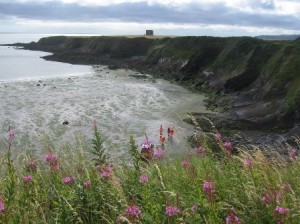As part of the Greater Dublin Drainage Project (GDD), Fingal County Council are to undertake Dye trace and Drogue tracking surveys in the Irish Sea off the coast of North Dublin. The Dye and Drogues will be released in the northern and southern outfall study areas. These areas have been identified as potential outfall areas for the GDD project. The northern outfall study area is located to the north of Loughshinny harbour. The southern outfall area is near Portmarnock.
The works commenced the week beginning 23rdJuly and will be carried out over a 2 week period subject to suitable weather conditions. Whilst both Dye and Drogues will be released within the outfall study areas, they will not remain confined to these areas and are likely to be circulated further afield due to tides and currents.
During this time a red fluorescent dye may be visible in the Irish Sea in the general vicinity of the outfall areas. Drogues will be fitted with radar reflectors and flashing beacons to aid avoidance by other navigators and will be recovered following each track. The Coast Guard will be notified in advance of any Dye and Drogue release.
This dye is non pollutant and does not pose any harm to the environment. The public should not be alarmed by its presence.
Skerries Coast Guard – a voluntary rescue unit of the Irish Coast Guard.

 and his film crew as they travelled the East coast of Ireland. Filming took place at the Skerries Coast Guard station and also out on patrol with the team at the nearby picturesque fishing village of Loughshinny.
and his film crew as they travelled the East coast of Ireland. Filming took place at the Skerries Coast Guard station and also out on patrol with the team at the nearby picturesque fishing village of Loughshinny.